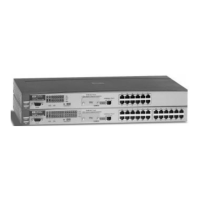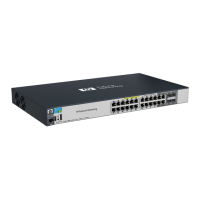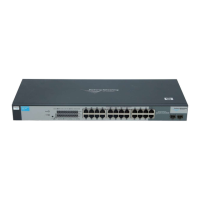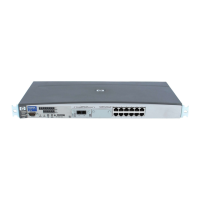4-13
Configuring Secure Shell (SSH)
Configuring the Switch for SSH Operation
The public key generated by the switch consists of three parts, separated by
one blank space each:
Figure 4-8. Example of a Public Key Generated by the Switch
(The generated public key on the switch is always 896 bits.)
With a direct serial connection from a management station to the switch:
1. Use a terminal application such as HyperTerminal to display the switch’s
public key with the show ip host-public-key command (figure 4-7).
2. Bring up the SSH client’s "known host" file in a text editor such as Notepad
as straight ASCII text, and copy the switch’s public key into the file.
3. Ensure that there are no line breaks in the text string. (A public key must
be an unbroken ASCII string. Line breaks are not allowed.) For example,
if you are using Windows® Notepad, ensure that W
ord Wrap (in the Edit
menu) is disabled, and that the key text appears on a single line.
Figure 4-9. Example of a Correctly Formatted Public Key (Unbroken ASCII String)
4. Add any data required by your SSH client application. For example Before
saving the key to an SSH client’s "known hosts" file you may have to insert
the switch’s IP address:
Figure 4-10. Example of a Switch Public Key Edited To Include the Switch’s IP Address
896 35 427199470766077426366625060579924214851527933248752021855126493
2934075407047828604329304580321402733049991670046707698543529734853020
0176777055355544556880992231580238056056245444224389955500310200336191
3610469786020092436232649374294060627777506601747146563337525446401
K
e
Encoded
Public
Encode
d
Key
Size
Encoded
Public
Exponent
Encoded
Modulus
Inserted
IP
Address
!FishSecurity.book Page 13 Thursday, October 10, 2002 9:19 PM
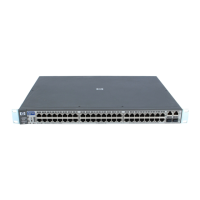
